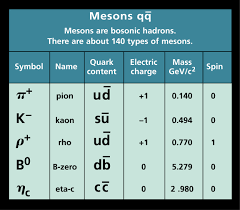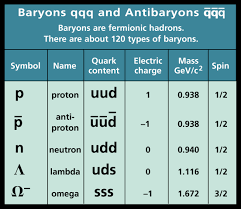 The word „quark” originally appeared in a single line of the the novel Finnegans Wake written by the Irish author James Joyce (1882–1941). The protagonist of the book is a publican named Humphrey Chimpden Earwicker who dreams that he is serving beer to a drunken seagull (no joke). Instead of asking for „three quarts for Mister Mark” the inebriated bird says „three quarks for Muster Mark”. Since the pre-standard model theory was complete with only three quarks, the name made some sense. The full standard model today needs six quarks. That hasn’t made the word any less fun to say. Quark! The six flavors of quark are up, down, strange, charm, top, and bottom. The names of the flavors are essentially meaningless.
The word „quark” originally appeared in a single line of the the novel Finnegans Wake written by the Irish author James Joyce (1882–1941). The protagonist of the book is a publican named Humphrey Chimpden Earwicker who dreams that he is serving beer to a drunken seagull (no joke). Instead of asking for „three quarts for Mister Mark” the inebriated bird says „three quarks for Muster Mark”. Since the pre-standard model theory was complete with only three quarks, the name made some sense. The full standard model today needs six quarks. That hasn’t made the word any less fun to say. Quark! The six flavors of quark are up, down, strange, charm, top, and bottom. The names of the flavors are essentially meaningless.
 Quarks are known to bind into triplets and doublets. The triplets are called baryons, a term derived from the Greek word βαρύς (varys) meaning „heavy”. The doublets are called mesons, a term derived from the Greek word μέσος (mesos) meaning „medium”. Collectively baryons (the heavy triplets), mesons (the middleweight doublets), and quarks (the fundamental particles) are known ashadrons, from the Greek word αδρός (adros) meaning thick, robust, massive, or large. This name alludes to the ability of the point-like quarks to bind together and form particles that are „thick” in a certain sense.
Quarks are known to bind into triplets and doublets. The triplets are called baryons, a term derived from the Greek word βαρύς (varys) meaning „heavy”. The doublets are called mesons, a term derived from the Greek word μέσος (mesos) meaning „medium”. Collectively baryons (the heavy triplets), mesons (the middleweight doublets), and quarks (the fundamental particles) are known ashadrons, from the Greek word αδρός (adros) meaning thick, robust, massive, or large. This name alludes to the ability of the point-like quarks to bind together and form particles that are „thick” in a certain sense.


